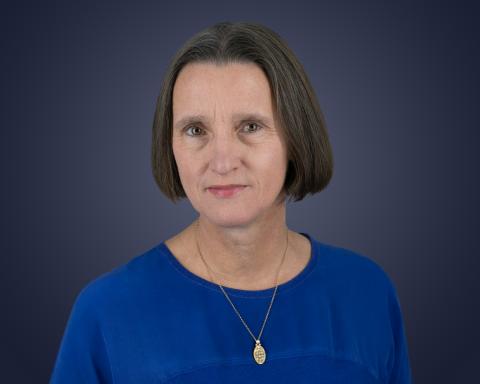Enders Analysis was mentioned in Bloomberg on "Revolut’s Newest Product Offering Is Mobile Phone Service"
16 December 2025The service will see Revolut pay US mobile startup Gigs to use Vodafone’s network, joining other so-called mobile virtual network operators that make up nearly a fifth of the UK mobile market, according to Enders Analysis.
Abi Watson was quoted in City A.M on "Substack implements native advertising following $1.1bn valuation"
15 December 2025The shift from an explicitly anti-advertisement approach to take advantage of ad revenue reflects a broader trend in media, says Abi Watson, head of publishing at Enders Analysis. “Netflix once defined itself by its refusal to take ads, and now advertising is one of its core strategic pillars.”
Watson believes there is a defensive element to Substack’s new scheme. “Expanding the commercial toolkit helps Substack retain its biggest creators.
“Subscriptions let you monetise only the most committed part of the funnel. Advertising opens up the rest – the large cohort of registered users with low propensity to pay, plus the passing traffic that still has value in aggregate.”
François Godard was quoted in Les Echos on "CNN: Mark Thompson, the ultimate shield against Trump"
15 December 2025“CNN will struggle against Fox News’ model with its $39.99-per-month ESPN Fox One Bundle, driven by sports. They need to integrate a package ,” believes François Godard, Senior Analyst at Enders Analysis. The key question remains how CNN can integrate a package into the existing offerings of Disney-Hulu-HBO Max and ESPN Fox One. But beyond that, what will happen to CNN if Warner continues to separate its linear channels from its more profitable streaming operations? Not to mention the uncertainties surrounding its strategic priorities if Paramount succeeds in its takeover bid.
Enders Analysis was mentioned in The Times on "Facebook owner strikes AI deals with news publishers"
8 December 2025DMG Media, the owner of brands including Daily Mail Online and Metro, has complained about AI overviews leading to a drop in referrals to its websites of 89 per cent. The publisher told the Competition and Markets Authority that Google’s summaries were “carefully constructed” to ensure “the user has no reason to read any further” than the search page. Meanwhile, Enders Analysis, the research group, has warned publishers that “search traffic is no longer a given” in the age of artificial intelligence.
Claire Enders, of Enders Analysis, describes the break-up idea as a “non-starter”. In a report last year, analysts at Enders branded a subscription model “antithetical to the BBC’s public service mission, necessarily ending universality of access and undermining its breadth of content”.
François Godard, senior analyst at consulting firm Enders, explains: "The future of Eurosport without the backing of a major streaming platform or a global group like Warner seems difficult to me. Eurosport, despite its name, has always been a network of national channels that are quite different from each other (Eurosport Germany is very different from Eurosport Italy), even if they are united by some important rights, such as the Olympics. I would bet on Eurosport being sold piecemeal to national operators. In Italy, for example, Discovery is potentially of interest to Sky Italia."
Claire Holubowskyj was quoted in The Daily Mail This is Money on "Ad guru exodus deals blow to wounded WPP"
8 December 2025Claire Holubowskyj, at Enders Analysis, said many issues had been 'brewing for quite some time' and the arrival of a new chief executive hadn't resulted in a 'material step change'.
She said: 'Rose needs time to get going, but the business does not necessarily have lots of time to give her as the results have been so negative for a while.'
She added that with AI taking a dominant role it was 'unsurprising' creative staff were getting 'jittery' about the future.
'If that's the new direction, they will be worrying about what that means for the traditional model of creatives driving well-thought-out ad campaigns.'
François Godard was quoted in Les Echos on "Ted Sarandos, the Netflix self-made man who became king of Hollywood"
8 December 2025"It is Ted Sarandos who is behind Netflix's original creations - which initially tended to make acquisitions - and behind the fact of offering a whole series allowing binge watching," emphasizes François Godard, analyst at the firm Enders Analysis.
Even if it's not without risk. "He'll have to prove that there won't be any destruction of value with an acquisition of this size," François Godard reiterated. A challenge, especially since the CEO himself pointed out in October, during a conference call with analysts, that Netflix had grown without mega-acquisitions. Until now.
Tom Harrington was quoted in Forbes on "Revealed: The Streaming Show That Cost A Billion Dollars For Just Two Seasons"
8 December 2025The lukewarm reception may not actually matter. "The main purpose of Prime (alongside peripheral things like making the overall Prime subscription even more stickier for consumers) is to sell third-party video subscriptions and rent films – original Prime content is a hook to get viewers there in the first place," explains Tom Harrington of media researchers Enders Analysis
